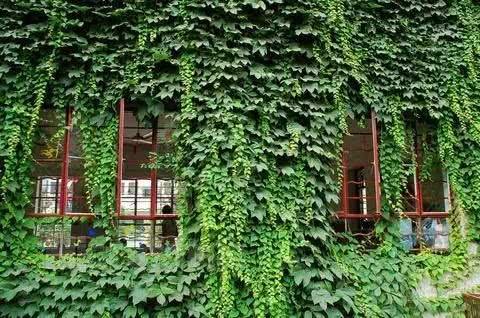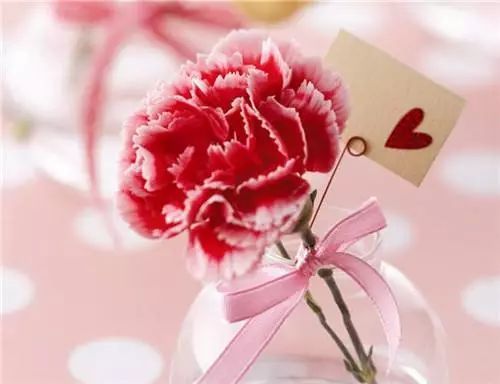The independent kingdom of climbing plants

Brain craftsmanship
You have 40 friends who follow the official account!
If you want to build a flower wall, you can consider planting some-climbing plants, or climbing vines, climbing plants, that is, generally speaking, the stem is slender and cannot be upright, but must be attached to the support to grow upward for vertical greening, which can make full use of space and take up a small footprint with quick results. Configure climbing plants on walls, frames, hedges, scaffolding, columns, doors, ropes, poles, dead trees, rocks, and can also receive ornamental effects that can not be achieved by general greening.
There are many kinds of climbing plants. Most of them are woody vines, and the others are perennial, biennial and perennial herbs. According to the climbing ability and mode of climbing plants, climbing plants can be divided into winding, tendrils, adsorption and vines:
1, winding climbing plants: rely on their own winding support to extend upward growth, strong climbing ability, but need the assistance of climbing frame climbing net. Common are wisteria, Aristolochia mandshurica, honeysuckle, sesame vine, turnip, morning glory and so on.
Honeysuckle has a mild fragrance, especially at dusk. It is rich in varieties, almost all of them are climbers. A single honeysuckle plant can easily cover a large Arbor.
2, tendrils climbing plants: rely on special organ tendrils (stem tendrils, leaf tendrils, etc.) climbing, climbing ability is also very strong, need to climb frame man-made traction. Such as grapes, ornamental pumpkins, gourds, towel gourd, passionflower, firecrackers, sweet peas, clematis and so on.
As a leader in vines, clematis is known as the queen of vines for its graceful posture, elegant flowers and rich varieties. Clematis clematis branches and leaves are sparse, some flowers are large and colorful, and some florets gather into large inflorescences, which is interesting and unique, which is an indispensable good material in climbing greening. Can be planted in the wall, in front of the window, or attached to trees, shrubs, planted in rockery, rock, climbing on the style, door, fence, can also be potted ornamental.
3, adsorption climbing plants: there are aerial roots or suckers, rely on adsorption and climbing, without artificial traction, often used for walls. Such as Parthenocissus with sucker, five-leaf brocade, with aerial roots of ivy, Lingxiao, Fufang vine, Luoshi, Ficus pumila and so on.
Blooming is like a small windmill, also known as "windmill jasmine". Dayeluoshi likes semi-shade cool, cold-resistant and heat-resistant, semi-evergreen, branch length up to 10 meters, flowering in early May (slightly later than wood incense), strong fragrance, is a good product for vertical greening.
4, trailing climbing plants: there are no special climbing organs, only rely on thin and trailing branches, climbing ability is the weakest, often need to be assisted binding, the common are rose, wood incense, Fujimoto rose and so on.
Although Muxiang does not have the beautiful flowers of Liana rose, as an evergreen or semi-evergreen climbing shrub, it is more suitable for vertical greening of flower racks, flower walls, hedges and rock walls in private courtyards. Corymbose inflorescences terminal, florescence early summer. The white wood fragrance is as white as snow, the aroma is distant, it opens like a waterfall, and the effect is very spectacular after many years.
Speaking of Fujimoto rose, we may mistakenly think that rose, rose and rose are similar, many people do not know the difference. The distinction first looks at the leaves, the leaves of the rose are generally 3-5, the leaves are flat, smooth and bright, and the leaves of the rose are 5-9, spreading but pilose. Secondly, most roses are multi-season flowering, commonly known as month red, rose flowers are large, colorful, flower shapes are varied, while roses are generally only pink and white, and the flowers are small, generally only 3-5 cm, only one flower in spring every year, climbing ability is relatively strong.
Key points of planting design of climbing plants
When using climbing plants to make landscapes, choose the right climbing plants. Plant selection is carried out according to the climbing ability, adaptability, ecological requirements and site characteristics of the related environment.
Different climbing plants are suitable for different places due to their different climbing abilities and methods. For example, plants with strong climbing ability are suitable for vertical greening of buildings, walls, rockery stones, columns, etc., while winding and tendrils climbing plants can be used for hedgerow. It can also be used in high platforms of buildings and other places. Reflect the characteristics of its natural sagging.
It is necessary to analyze the site conditions of the planting site, such as light, water, temperature, soil, etc., and then make plant selection. Light-loving Lingxiao, wisteria and most annual herbaceous climbing plants (towel gourd, pineapple, gourd, etc.) can be used in sunny environments; shade-resistant green apple, ivy, Schisandra, etc., suitable for landscaping under the forest and on the shady side of the building.
Different landscaping forms have different landscaping purposes, such as hedgerow-style landscaping is mostly for the main purpose of viewing flowers, so it is appropriate to choose colorful flowers, such as rattan moon, clematis. While scaffolding landscape is for viewing and shading at the same time, we should choose large vines, and mainly woody vines.
In the landscape of climbing plants. The collocation between different kinds should be used as much as possible to prolong the viewing period and create a landscape of the four seasons.
Choose clematis, which are rich in flowers, to be co-planted with Liana rose, and the rattan rose has become the most natural climbing frame for clematis, and the coordination of the two colors should also be taken into account.
Climbing plants can not only observe leaves, flowers and fruits with good seasonal color changes, but also have the function of separating space and creating a rest environment; at the same time, it can increase the area of green space and expand the green space. As long as you understand the habits of climbing plants and provide the necessary conditions for plant growth, you can plant them in any location you can imagine.
Everything is wonderful, there is a praise mall in the flower school.
There are flowers and love, a school of flowers
- Prev

Maybe you don't know what Qixi Festival gave you? Plant carnations with your loved ones.
Brainstorm you have 40 friends to follow the official account! A bouquet of flowers is always popular with girls, but isn't it too thin to send flowers only for anniversaries or holidays? So learn how to maintain, do Huada talent is the opportunity in the future.
- Next

This kind of black is called the detoxification king to raise a basin of minor disasters and ailments at home depends on it.
There are many people raising flowers and plants in their families, but most people grow flowers just to enjoy the beauty of flowers, and because flowers can make the room more beautiful and make guests feel that the owner of flowers is wrong.
Related
- Wuhan Hospital Iron Tree Blooming Result Was Instantly Frightened by the Gardener Master
- Which variety of camellia is the most fragrant and best? Which one do you like best?
- What is the small blue coat, the breeding methods and matters needing attention of the succulent plant
- Dormancy time and maintenance management of succulent plants during dormancy
- Minas succulent how to raise, Minas succulent plant pictures
- What are the varieties of winter succulent plants
- How to raise succulent plants in twelve rolls? let's take a look at some experience of breeding twelve rolls.
- Attention should be paid to water control for succulent plants during dormant period (winter and summer)
- Watering experience of twelve rolls of succulent plants
- Techniques for fertilizing succulent plants. An article will let you know how to fertilize succulent plants.

